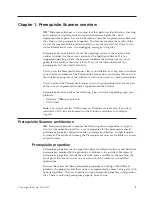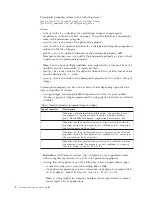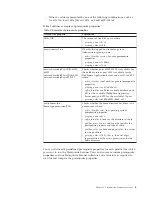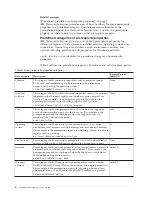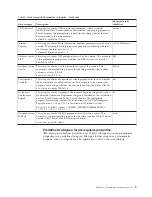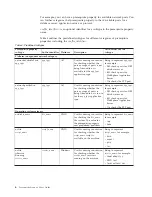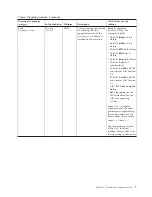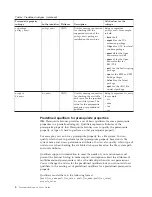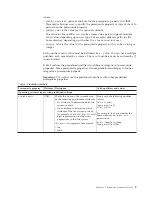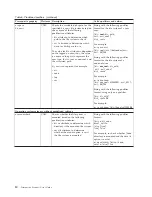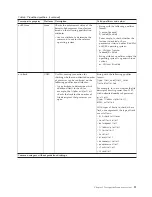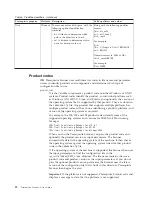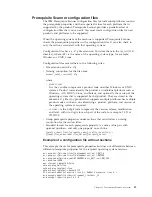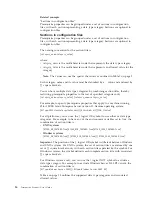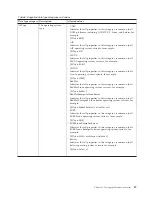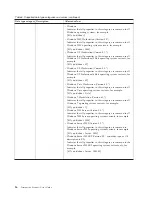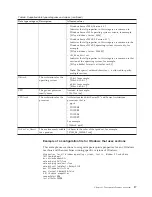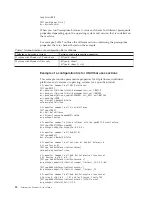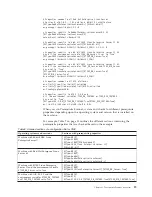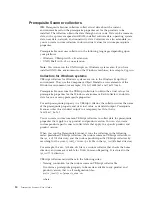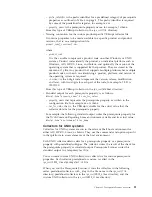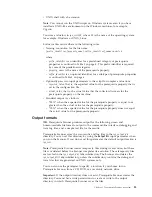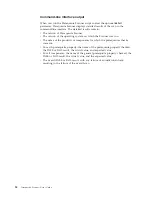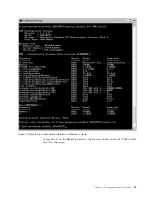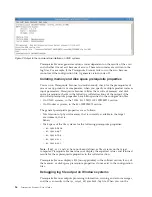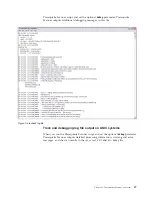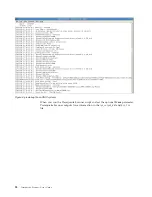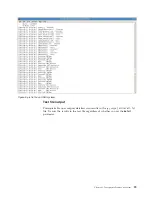
Related concepts
:
“Sections in configuration files”
Prerequisite properties can be grouped under a set of sections in configuration
files, with each section representing a data type category. Sections are optional in
configuration files.
Sections in configuration files
Prerequisite properties can be grouped under a set of sections in configuration
files, with each section representing a data type category. Sections are optional in
configuration files.
The naming convention for the section title is:
[
category_name
:
category_value
]
where:
v
category_name
is the multicharacter code that represents the data type category
v
category_value
is the multicharacter code that represents an allowed value for the
category
Note:
The values can use the special characters as outlined in Table 1 on page 2.
Each category name and its value must be delimited by a
:
colon and enclosed by
[]
square brackets.
You can have multiple data type categories by combining section titles, thereby
restricting prerequisite properties to that set of specified categories only.
[
category_name
:
category_value
][
category_name
:
category_value
]
For example, to specify prerequisite properties that apply to a machine running
32-bit, SUSE Linux Enterprise Server version 11, Itanium operating system:
[OSType:SUSELinuxEnterpriseServer11][OSArch:64-bit][CPU:Itanium]
For all platforms, you can use the
|
logical OR symbol to use either or data type
categories. For example, to have any of the environment variables set to
True
, the
combination of section titles is:
v
UNIX systems
[@TPAE_DB_FEATURE:True
|
@TPAE_DIR_FEATURE:True
|
@TPAE_J2EE_FEATURE:True]
v
Windows systems
[@TPAE_DB_FEATURE:True]
|
[@TPAE_DIR_FEATURE:True]
|
[@TPAE_J2EE_FEATURE:True]
Important:
The position of the
|
logical OR symbol is different between Windows
and UNIX systems. For UNIX systems, the set of section titles are enclosed by one
set of
[]
square brackets only with each section title separated by the symbol. For
Windows systems, the symbol delimits each complete section title with associated
[]
square brackets.
For Windows systems only, you can use the
!
logical NOT symbol to exclude a
data type category. For example, to exclude Windows Server 2003 R2 variant, the
combination of section titles is:
[OSType:Windows Server 2003][
!
OSType:Windows Server 2003 R2]
Table 6 on page 15 outlines the supported data type categories and associated
allowed values.
14
Prerequisite Scanner: User's Guide
Summary of Contents for Prerequisite Scanner
Page 1: ...Prerequisite Scanner Version 1 1 1 10 User s Guide ...
Page 2: ......
Page 3: ...Prerequisite Scanner Version 1 1 1 10 User s Guide ...
Page 8: ...vi Prerequisite Scanner User s Guide ...
Page 10: ...viii Prerequisite Scanner User s Guide ...
Page 40: ...Figure 6 result txt file on Windows systems 30 Prerequisite Scanner User s Guide ...
Page 46: ...36 Prerequisite Scanner User s Guide ...
Page 68: ...58 Prerequisite Scanner User s Guide ...
Page 78: ...Figure 11 precheck log file with the debug data 68 Prerequisite Scanner User s Guide ...
Page 84: ...74 Prerequisite Scanner User s Guide ...
Page 88: ...78 Prerequisite Scanner User s Guide ...
Page 92: ...82 Prerequisite Scanner User s Guide ...
Page 116: ...106 Prerequisite Scanner User s Guide ...
Page 122: ...112 Prerequisite Scanner User s Guide ...
Page 136: ...126 Prerequisite Scanner User s Guide ...
Page 138: ...128 Prerequisite Scanner User s Guide ...
Page 140: ...130 Prerequisite Scanner User s Guide ...
Page 158: ...148 Prerequisite Scanner User s Guide ...
Page 164: ...154 Prerequisite Scanner User s Guide ...
Page 166: ...156 Prerequisite Scanner User s Guide ...
Page 170: ...160 Prerequisite Scanner User s Guide ...
Page 171: ......
Page 172: ... Printed in USA ...


